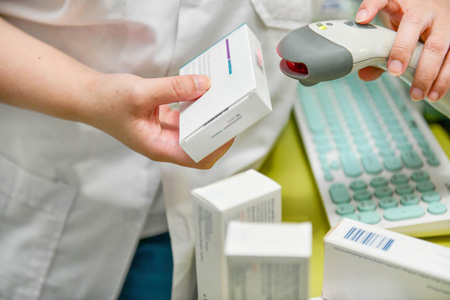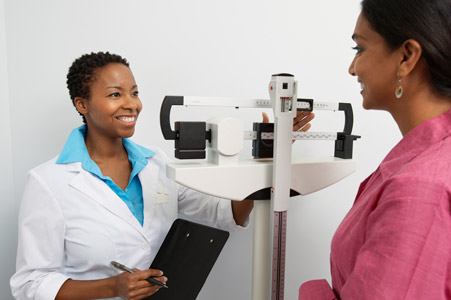

.jpg)
Medical Screenings: Prevention, Detection, and Peace of Mind
Visiting your healthcare provider regularly is important, even if you are feeling healthy. Medical screenings are proactive tests that help healthcare providers detect potential health issues early on, allowing for timely interventions and improved outcomes. They are powerful tools that aid with early detection of various health conditions, even before you notice any symptoms. Many serious diseases, like hypertension, diabetes, and certain cancers, often progress silently without noticeable signs in their early stages.
Hepatitis C Screening
Hepatitis C is a viral infection that causes liver inflammation, sometimes leading to serious liver damage. The hepatitis C virus (HCV) spreads through contaminated blood. CDC Recommendations for Hepatitis C Screening among adults at least once in a lifetime for all adults aged 18 years and older, except in settings where the prevalence of HCV infection (HCV RNA‑positivity) is less than 0.1%.
Lipid Panel
A lipid panel is a common blood test that measures the amount of certain fat molecules called lipids in your blood. Healthcare providers use it to assess your risk of cardiovascular disease. The panel includes three measurements of your cholesterol levels and a measurement of your triglycerides. If your provider orders this test and you haven’t already been diagnosed with high cholesterol, then they may use it to determine if your cholesterol level is normal or falls into a borderline-, intermediate- or high-risk category.
Diabetes Screening
Screening for diabetes usually starts with a test called an A1C test, also known as the hemoglobin A1C or HbA1c test. It is a blood test that measures your average blood sugar levels over the last three months. Your healthcare provider will use the A1C test to help diagnose diabetes or pre-diabetes. An A1C test is usually recommended in all adults over 45 years old as a baseline. It might also be recommended if you are under 45 years old but have one or more risk factors for diabetes like if you are overweight, have a close relative with diabetes, ever had gestational diabetes, or are an African American, Hispanic or Latino, American Indian, or Alaska Native person.
Breast Cancer Screening
Guidelines in 2023 advise all women to get screened for breast cancer every other year once they turn 40 years old. Women with higher risk factors of breast cancer should start screening at even younger ages. A breast cancer screen involves a mammogram, which is an X-ray of the breast tissue. Mammograms can detect small lumps or abnormalities in the breast that may not be felt during a physical examination. Mammograms are the most widely used and effective screening tool for breast cancer.
Colon Cancer Screening
Screening for colorectal cancer is recommended starting at age 45 unless at increased risk. There are several screening tests available for finding polyps or colorectal cancer. Your healthcare provider will help choose the right test for you. They will take a few things into consideration when choosing the right screening.
- Stool tests - there are three stool tests available. The gFOBT and FIT tests are designed to detect blood in the stool and should be completed every year. The FIT-DNA test combines the FIT test with a test that can detect altered DNA in the stool. It should be completed every three years.
- Flexible sigmoidoscopy looks at the lower third of the colon. It involves a doctor inserting a thin, flexible, lighted tube into the rectum. Flexible sigmoidoscopy should be completed every 5 years. If used in combination with the FIT stool test then it is repeated every 10 years.
- Colonoscopy is similar to flexible sigmoidoscopy but the inserted tube is longer so the entire rectum and colon are examined. For people without an increased risk of colorectal cancer, this test is repeated every 10 years.
- CT Colonography (Virtual Colonoscopy) uses X-rays to get images of the entire colon. It is less invasive than a traditional colonoscopy. This test should be completed every 5 years
Lung Cancer Screening
Yearly lung cancer screenings are recommended once you turn 50 years old if you currently smoke or have quit in the last 15 years and have at least a 20 pack-year history. (This is the number of packs of cigarettes per day multiplied by the number of years smoked. For example, someone who smoked 2 packs a day for 10 years [2 x 10 = 20] has 20 pack-years of smoking, as does a person who smoked 1 pack a day for 20 years [1 x 20 = 20].) To screen for lung cancer, a healthcare provider will perform a CT scan of the lungs to look for any abnormalities or suspicious nodules in the lungs
Prostate Screening
Healthcare providers usually start screening men for prostate cancer at age 50 if they are not at high risk for the disease. Men may be asked to screen starting at age 45 if they are at high risk. (this includes African Americans and men who have a first-degree relative diagnosed with prostate cancer at an early age) or age 40 if they are at very high risk (those with more than one first-degree relative who had prostate cancer at an early age). There are two screenings for prostate cancer. One is a blood test called the prostate-specific antigen (PSA) blood test. If levels of the blood test are below 2.5ng/mL then it is repeated every 2 years. If greater than 2.5ng/mL then it’s repeated yearly. The other screening is a digital rectal exam (DRE).
Osteoporosis Screening
Bone density testing is recommended for all women over 65, all men over 70, and anyone who has broken a bone after age 50. Younger people may need a bone density test if they have certain risk factors like family history, vitamin D deficiency, or malabsorption. A dual-energy X-ray absorptiometry (DXA) test is able to measure how much mineral, such as calcium, is in the bone. The output of a DXA test is a number called a T-score. Normal is zero. The more negative the number, the weaker your bones and the more likely they are to break. A T-score of -2.5 or below (such as -3.0), is considered osteoporosis, assuming there is no other reason for the score.
Abdominal Aortic Aneurism Screening
Abdominal aortic aneurysm (AAA) is when the aorta becomes weakened and expands. The aorta is the largest blood vessel in the body. When an abdominal aortic aneurysm ruptures, it can cause life-threatening bleeding. Screening is important because abdominal aortic aneurysms often grow slowly without noticeable symptoms. An ultrasound screening is recommended for all men and women aged 65 to 75 years with a history of tobacco use, men 55 years or older with a family history of AAA, and women 65 years or older who have smoked or have a family history of AAA.
Regular screenings help identify these conditions when they are most treatable, enabling medical professionals to intervene promptly and potentially prevent the disease from worsening.


.jpg)
.jpg)
.jpg)


















.jpg)





















.jpg)

















.jpg)


























.jpg)
.jpg)
.jpg)









